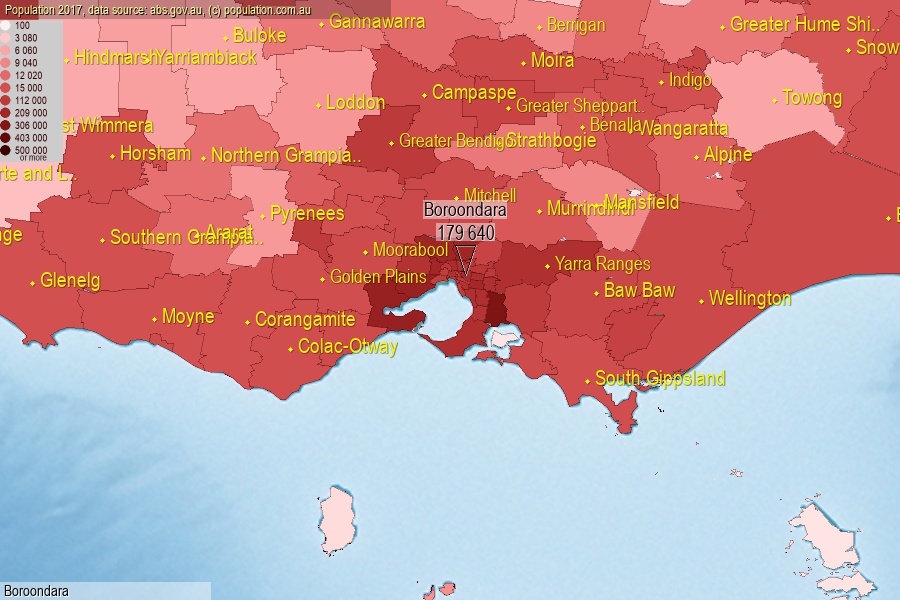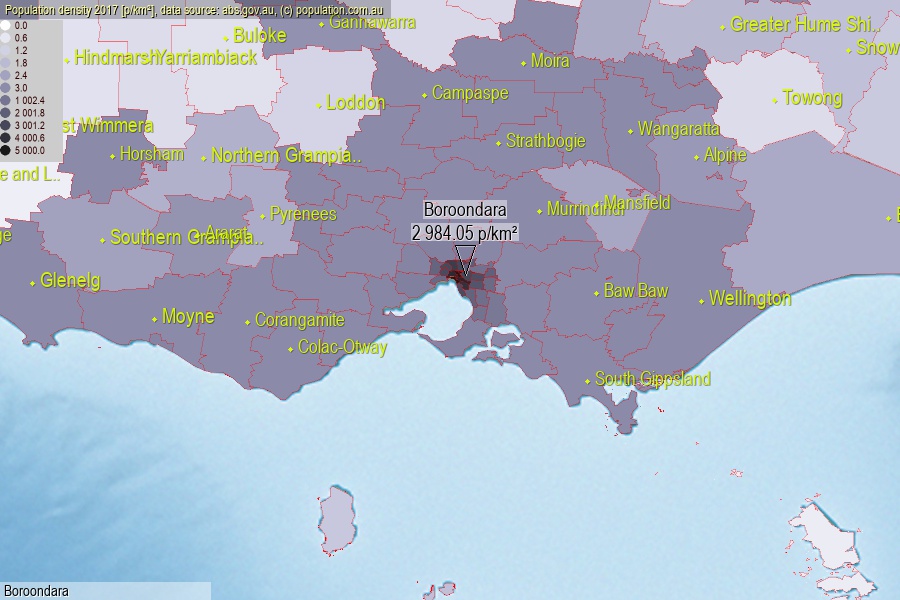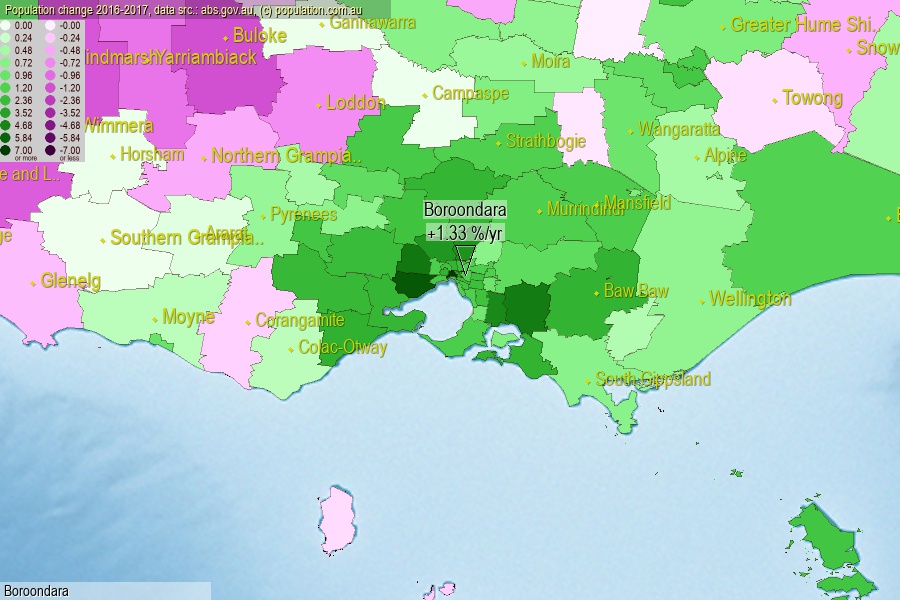 population.com.au
population.com.auLast official estimated population of Boroondara City (as Local Government Area) was 179 640 people (on 2017-06-30)[2]. This was 0.73% of total Australian population and 2.794% of VIC population. Area of Boroondara is 60.20 km², in this year population density was 2 984.05 p/km² . If population growth rate would be same as in period 2016-2017 (+1.33%/yr), Boroondara population in 2025 would be 199 723. [0]



Click to enlarge. Boroondara is located in the center of the images.
Population [people], population density [p./km²] and population change [%/year] [2]
[1996-2001] +0.31 %/Y
[2001-2002] +0.41 %/Y
[2002-2003] +0.26 %/Y
[2003-2004] +0.37 %/Y
[2004-2005] +0.53 %/Y
[2005-2006] +0.55 %/Y
[2006-2007] +1.07 %/Y
[2007-2008] +1.30 %/Y
[2008-2009] +1.15 %/Y
[2009-2010] +0.63 %/Y
[2010-2011] +0.44 %/Y
[2011-2012] +0.85 %/Y
[2012-2013] +1.19 %/Y
[2013-2014] +1.28 %/Y
[2014-2015] +1.21 %/Y
[2015-2016] +1.44 %/Y
[2016-2017] +1.33 %/Y
[0] Calculated with linear interpolation from officially estimated population
[1] Read more about LGA and Australian Statistical Geography Standard (ASGS) on abs.gov.au
[2] Population data from Australian Bureau of Statistics (Population and density: 2017; change: 2016-2017)
[3] Digital Boundaries: Australian Statistical Geography Standard (ASGS) 2016.